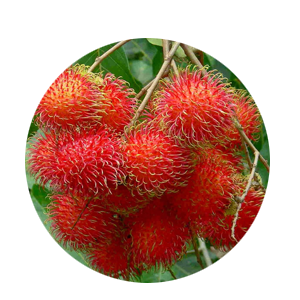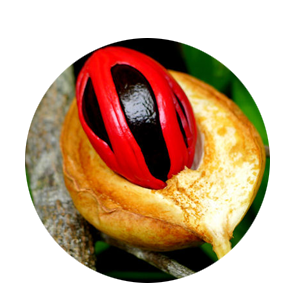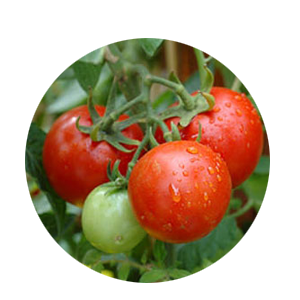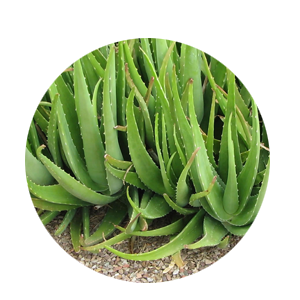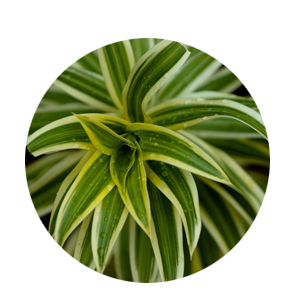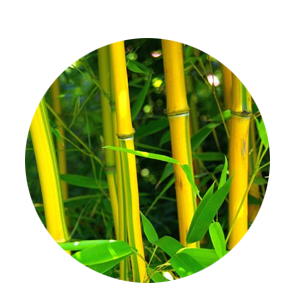Noni - Seedlings - (5x7 bag)

Item Description
GENERAL INFORMATION ABOUT A NONI Morinda citrifolia is a tree in the coffee family, Rubiaceae. Its native range extends through Southeast Asia and Australasia, and the species is now cultivated throughout the tropics and widely naturalized. Among some 100 names for the fruit across different regions are the more common English names, great morinda, Indian mulberry, noni, beach mulberry, and cheese fruit. M. citrifolia, also called \\\\\\\"noni\\\\\\\" grows in shady forests, as well as on open rocky or sandy shores. It reaches maturity in about 18 months, then yields between 4 and 8 kg of fruit every month throughout the year. It can grow up to 9 m (30 ft) tall, and has large, simple, dark green, shiny and deeply veined leaves. The plant bears flowers and fruits all year round. The fruit is a multiple fruit that has a pungent odor when ripening, and is hence also known as cheese fruit or even vomit fruit. It is oval in shape and reaches 10–18 centimeters size. At first green, the fruit turns yellow then almost white as it ripens. It contains many seeds. Noni is sometimes called starvation fruit. Despite its strong smell and bitter taste, the fruit is nevertheless eaten as a famine food and, in some Pacific islands, even a staple food, either raw or cooked. Southeast Asians consume the fruit raw with salt or cook it with curry. The seeds are edible when roasted. HELTH BENENIFTS OF NONI Noni fruit powder contains carbohydrates and dietary fibre in moderate amounts. These macronutrients evidently reside in the fruit pulp, as Noni juice has sparse nutrient content. The main micronutrients of Noni pulp powder include vitamin C, niacin , iron and potassium. Vitamin A, calcium and sodium are present in moderate amounts. When Noni juice alone is analyzed and compared to pulp powder, only vitamin C is retained in an amount (34 mg per 100 gram juice) that is 64% of the content of a raw navel orange (53 mg per 100 g or 89% of the Daily Value). Sodium levels in Noni juice (about 3% of Dietary Reference Intake, DRI) are high compared to an orange, and potassium content is moderate. Here are some health benefits 1. Aids Weight Loss 2. Lowers Cholesterol 3. Beneficial For Diabetics 4. Proper Digestion 5. Prevents Stroke 6. Relieves Pain 7. Anti-Cancer Properties 8. Increases Energy Levels 9. Prevents Cataracts 10. Prevents Ulcers 11. Liver Protection 12. Facilitates Wound Healing 13. Prevents Degenerative Diseases 14. Natural Antidote For High Blood Pressure 15. Peps Up Your Memory 17. Helps In Dealing With Menstrual Issues 18. Natural Remedy For Anxiety, Stress, And Depression 19. Strengthens Vision And Prevents Visual Disorders 20. Antibacterial Properties× 21. Cure For Oral Infections 22. Help You Sleep Better 23. Treatment Of Skin Problems 24. Anti-Aging Benefits 25. Anti-Inflammatory Benefits
Maintanance, Disease Management And Yielding
MAINTANACE OF THE PLANTATION Once a plantation has been established, the work should not be considered finished. It will be necessary, for example, to protect the plantation against weather, fire, insects and fungi, and animals. A variety of cultural treatments also may be required to meet the purpose of the plantation. FERTILIZING It is recommended that you fertilize at the same time as you water using a time released fertilizer 8-3-9 or similar to help your Morinda Citrifolia Noni Trees grow and produce a substantial crop. These trees are moderate feeders and may require multiple feeding during the growing season. It is important to follow the fertilizers labeled instructions as to not burn or kill the tree. WATERING AND WEED CONTROL Young Noni should be watered regularly until fully established. In dry western climates, water mature trees deeply at least every one or two weeks. Desert gardeners may have to water more frequently. Mulch the soil around the trees to conserve moisture. Weeding is also very important. Remove all weeds 1.5 meter around the plant. PRUNING AND SHAPE OF TREE Young plants less than 3 years old may be pruned back after or during their first production of fruit. In the following years, the pruned plants will become bushy. Because noni trees can reach a height of approximately 20 feet, growers may wish to prune the vertical branches of mature plants to facilitate fruit harvest. Pruning is an effective means of disrupting conditions conducive to pest and disease outbreaks. PEST & DISEASE FOR NONI TREES Every fruit tree has the future potential for disease and insect damage. Factors such as location and weather will play a part in which issues your tree encounters. If available, disease-resistant trees are the best option for easy care; and for all trees, proper maintenance (such as watering, fertilizing, pruning, spraying, weeding, and fall cleanup) can help keep most insects and diseases at bay. HARVESTING YOUR NONI TREE Fruits are harvested when they start turning white, or even when they have become fully ripe, i.e., turned soft, translucent and characteristically odorous. The tree starts yielding at an age of three years and the regular yield will be from 5th year onwards. Annual fruit yield varies among noni varieties or genotypes and depends upon the environment (soil, eater) and cultivation system and /or ecosystem. Annual yields of up to approximately 80,000 kg/ha or more may be realized with large-fruited genotypes grown in monoculture full sun, with heavy fertilization. Yields depend upon many factors, including soil fertility, environment, genotype and planting density
- Propogation Method : Seeds & Bulbs
- Plant Climate : Sub Tropical, Normal, Hot, Cool, Tropical
- Plant Height : 1-2 feet
- Plant Weight : 1 Kg
- Plant Polybagsize : 5x7
Related Images
- Botanical Name : Morinda Citrifolia
- Malayalam Name : Noni
- English Name : Noni
If youlead a healthy lifestyle and drink Noni juice daily
Planting Instructions
PLANT THE RIGHT TREE AT RIGHT PLACE Growing space both above and below ground should be considered when selecting a tree to plant. Too often allowances are not made for the increased size of the tree when it matures. Most problems can be avoided by selecting the proper tree species for the available planting space. GENERAL TIPS 1. Plant at least 6 to 10 meter from main overhead utility wires on street or to your home. 2. Plant at least 7 meter from a building. 3. Plant at least 2 meter from sidewalks, driveways, patios and fences. 4. Plant at least 7 to 15 meter from other large trees. 5. Plant at least 7 meter from small trees. 6. Prioritize your tree planting with the sun’s direction to maximize shade by planting on the southwestern and western sides of your home BASIC PARAMETERS TO PLANT A NONI TREE 1. Soil :- Noni grows in a very wide range of soils and environment with a notable ability to survive in harsh environments. Noni tolerates a wide range of drainage conditions including seasonal water logging, but it prefers free, well drained soils. It can grow in wide range of acidity levels 2. Planting Distance : For Commercial Plantation:- An appropriate interplant spacing for noni is 10–15 feet. At 12-foot spacing there are 290 noni plants per acre. Higher planting densities (closer plant spacing) result in crowding and may exacerbate certain pest or disease problems. For Home Garden: -In a home garden generally we are planting one or two Noni trees along with other species of fruit plants. So it is better to keep minimum 7 meter distance from other plants to plant a Noni tree. 3. Pit size : Minimum 60cm width X 60cm Breadth X 60cm depth 4. Sunlight : 100% sunlight is best but can grow up to 50 % shade 5. Watering: During dry weather, initially water the plant once in two days and after one month of planting water every 7 to 10 days during the first year. TEN TIPS FOR PLANTING A NONI TREE 1. Dig a hole/pit 3 to 4 times wider than the container (Normally 60cm X 60cm X60cm is recommended). Fill the pit with top fertile soil to allow for proper root growth. Avoid clay type soil to refill the pit. 2. Add 250 gm Rock Phosphate or Born Meal and 3 to 5 kg Cow dung or compost in the top soil of the pit and mix it thoroughly (Thorough mixing of manure with soil is very important because direct contact of manure with the roots of the plant will cause the damage of roots and plant). 3. Make a small hole in the pit and carefully remove the plant from the container/pot or poly bag keeping the soil around the roots intact. Don‘t yank the plant out of the pot or poly bag as this can separate the roots from the tree. Poly bags can be easily removed by cutting it by a knife and pots can be removed easily by hitting slightly at the top edge of the pot. 4. Set the plant in the middle of the hole. Avoid planting the tree too deep. Keep the base of the trunk is slightly above ground level. Using some soil, secure the tree in a straight position, then fill and firmly pack the hole with the original soil, making sure there aren‘t any air pockets. 5. If the plant is Grafted or Budded make sure the grafted or budded portion of the plant is above the soil. Do not allow to touch the grafted or budded portion in the soil as it burns the skin of the plant. 6. Create a water-holding basin around the pit and give the plant a good watering. After the water has soaked in, spread protective mulch 2–4 inches deep in a 3-foot diameter area around the base of the tree, but not touching the trunk. Also provide a stich as a support for the plant, if needed. 7. The soil and mulch around your plant should be kept moist but not soggy. During dry weather, initially water the plant once in two days and after one month of planting water every 7 to 10 days during the first year. 8. Remove any tags and labels from the tree as these will affect the tree as it grows. You may need to prune any broken or dead branches. For Budded or Grafted plants it is very important that do not allow the growth of off shoots under the grafted/budded portion. Allow the growth of budded/grafted scions only. 9. Do not use chemical fertilizer or any other chemicals on your newly planted trees. Such products will kill your young trees. If needed you can add chemical fertilizers in small quantity (generally below 100gm) after two to three months of planting with sufficient irrigation. 10. Do not over water or allow rain water so much that you see standing water in the pit area of the plant. It will damage the plants roots and results the die of your plant.




